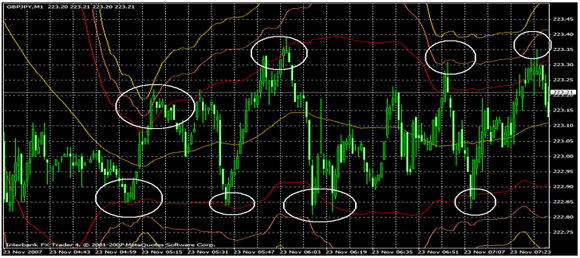No matter how many trading gurus out there claim otherwise, there’s no one Forex trading strategy that can give you the world’s riches. Often, it’s a combination of factors that make a strategy work. In addition, you’d have to take inventory of your skill set, trading personality, risk tolerance, and market condition to be able to make a strategy work well for you. Below, we take a look on different strategies you can employ during different market conditions. Momentum Strategy Momentum strategies are best used in trending market. There are several indicators you can use to determine the beginning of a trend, strength of the trend, signals that can determine your entry and exit points. Moving averages are good indicators of trends. That’s why technical study of simple moving averages (SMA) can provide better insights on how you will strategize your trades. For example, you’re going to use 12-period SMA where each period equals to 15 minutes. If the price moves above the 12-period SMA you can use this as a buy signal. You could set your stop at price levels below 12-period SMA. This way, your risks are minimized because your long position is stopped out at lesser loss in a falling market. The same thing goes for your short position in markets that are trending up. Additionally, you can use other indicators such as Moving Averages Convergence Divergence (MACD), advance decline Line (ADL), and Average Directional Index (ADI) to confirm the trend. Range Strategy The currencies market will not move in a trend all the time. Sometimes, it will oscillate in a range. Thus, for this kind of market condition, you need to have a range strategy in place to take advantage of this kind of market movement. If currencies are moving sideways, the basic premise is that it will trade above its support and below its resistance. Thus, one good strategy would be to buy when the price is approaching its support and sell if it’s near its resistance level. In this USDCAD chart, for example:  Looking at the chart when USDCAD was range-bound, range strategy would prove to be profitable. If you bought when the price approached support area and sell when it approached resistance area, you’d make good profits a couple of times in this single currency pair alone. Scalping Strategy Scalping strategy can be done regardless of market direction since individual trades are done within minutes. Scalpers generally get in and out of position quickly so market trend or range means almost nothing to them unless it’s part of his overall scalping strategy. Scalping can be a very profitable trading strategy; however, it’s not for everyone. It demands too much attention compared to the strategies discussed above. If you’re going to take on this trading strategy, you would need to pay close attention to the bid/ask spread and ignore basically everything else since money making opportunities are confined in those brief volatility. Each scalping trade does not boast of great profits; rather, the trader goes for small profits but higher number of trades. Thus, when those small profits are combined, it could amount to a hefty sum at the end of the day. Take for example these scalping executions:  Bollinger Bands were used as buy/sell signals on GBPJPY. If the price approaches the lower red band (period 50 deviation 2) it is used as a buy signal; and when the price nears halfway between the red and orange band (period 50 deviation 3) it is used as a sell signal. Currency pairs that have lower spread are good for conservative scalpers. EURGBP is one example because you don’t run into the danger of high unfavorable spread and you can get in and out of the trade in a couple of minutes. Remember that Forex trading strategies are just one piece of the equation. Aside from using a solid trading strategy, you have to have the discipline to follow through the system and master technical analysis to make sound trading decisions consistently. comments powered by Disqus |

|
|
|
|







